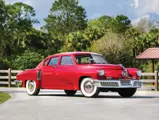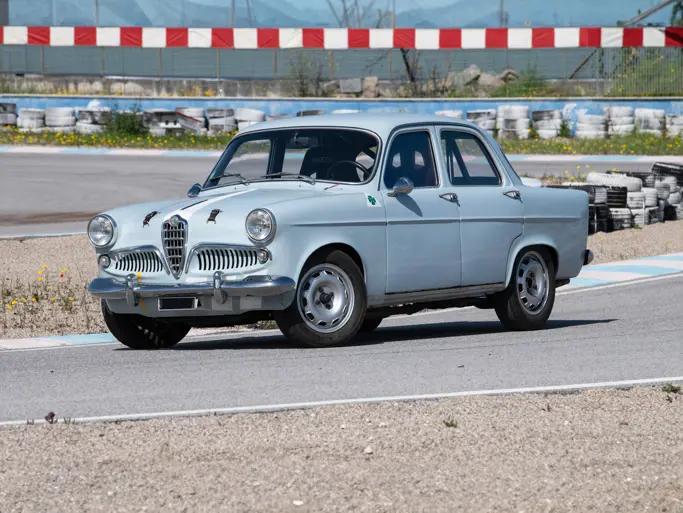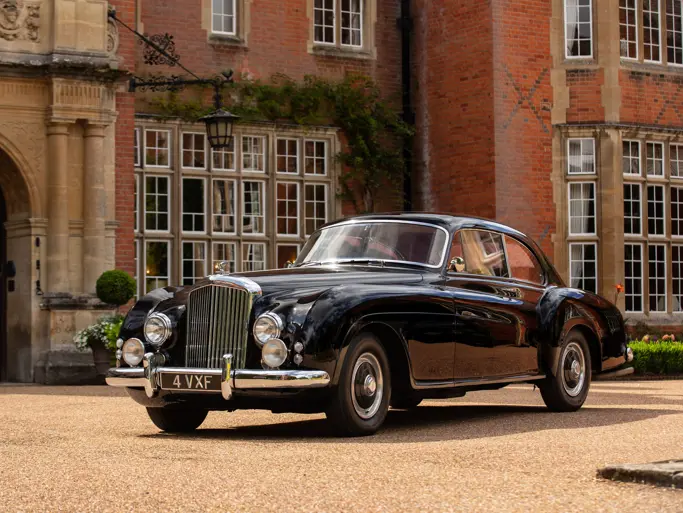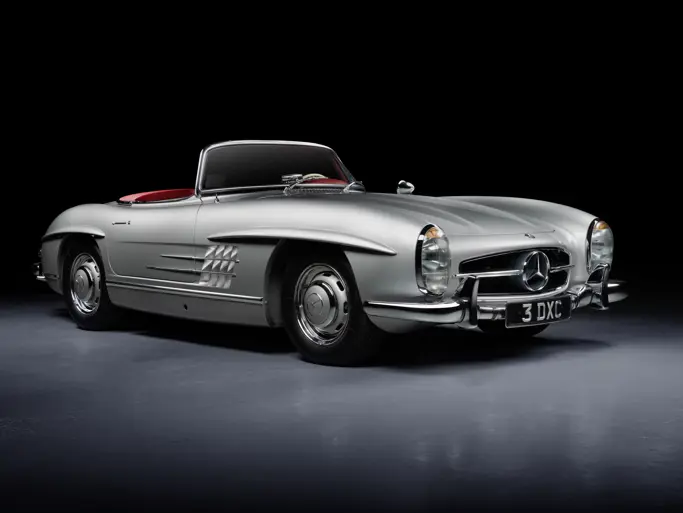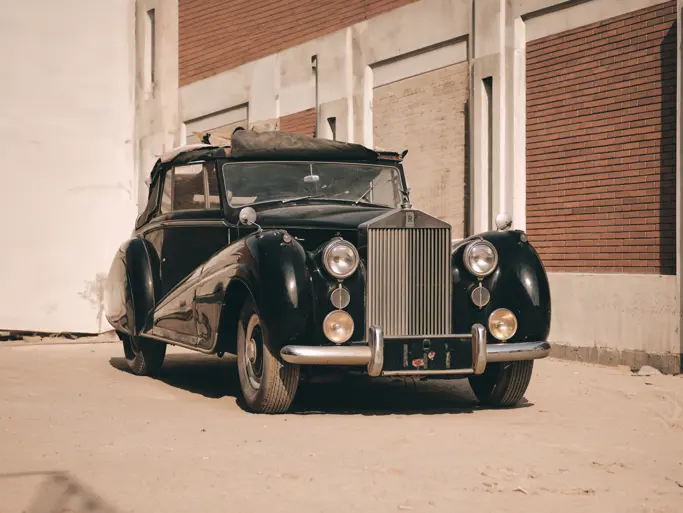Road & Track magazine’s founder, John R. Bond, once said, “A little knowledge about cars can be dangerous.” Preston Thomas Tucker was an industry veteran with a lot of knowledge about cars, and he used that knowledge to dream bigger than just about anyone else in the U.S. automobile industry after World War II. The reasons why he did not succeed remain controversial, but success is not only measured in dollars and production numbers. It is also measured in lasting memories, and for many, the Tucker 48 remains a rolling symbol of the American dream and one of the most advanced early post-war automobiles.
Fort Lauderdale 2016
1948 Tucker 48
{{lr.item.text}}
$950,000 - $1,250,000 USD | Not Sold
 | Fort Lauderdale, Florida
| Fort Lauderdale, Florida
{{internetCurrentBid}}
{{internetTimeLeft}}

- 335-cid, 166-hp horizontally opposed six-cylinder engine
- Tucker Y-1 four-speed pre-selector transmission
- Original test chassis for Tucker automatic
- Significant and known part of Tucker history
- An original, correct engine
- Highly detailed & authentic professional restoration
- Completed car from factory components
- Respected prior collector ownership
Tucker’s concept for his car was revolutionary. He intended to use a Ben Parsons-designed rear-mounted engine with all-independent Torsilastic rubber-sprung suspension and disc brakes on all four wheels. Drive was to be by twin torque converters, one at each rear wheel. The body design was penned by former Auburn Automobile Company designer Alex Tremulis, and it incorporated numerous safety features that Tucker promoted, including a windshield that would pop out in an accident, a wide space under the dash pad into where front seat passengers could duck before a collision, and a center-mounted third headlight that would turn with the front wheels.
Early in the production cycle, the Tucker saw some of those dreams evaporate. The safety features survived, but the Parsons 589 engine and direct torque converter drive proved impractical. Tucker purchased Air Cooled Motors, a New York manufacturer of small aircraft engines, and reworked their product for water cooling. He installed it in his car, along with a four-speed transaxle borrowed from the Cord 810 and 812.
Eventually, 51 examples of the Tucker 48 were assembled, and of those were the original “Tin Goose” prototype and 50 pilot-production cars. Public acclaim and desire for the new design was at a fever pitch. Unfortunately, it was all for naught. The Tucker Corporation came under the scrutiny of the U.S. Securities and Exchange Commission. The wheels of government ground slowly, and by the time Tucker and his executives were eventually declared “not guilty” in early 1950, the public had lost faith and Tucker had lost his factory. The car once nicknamed the “Torpedo” had been, effectively, torpedoed.
A little knowledge about cars can be dangerous, but it can also result in something so full of passion and fascination that it can survive bureaucracy and time to become an icon of its age and the ultimate validation of its creator. It is the American dream on four wheels.
THE LAST TUCKER COMPLETED
Perhaps unsurprisingly, as the product of a company that intended to build many more cars than it actually did, Tucker left behind several automobiles that had been partially but not fully completed. These included car no. 1052, the chassis, firewall, and suspension of which were accounted on March 3, 1949, as awaiting final assembly; according to Tucker historian, Jay Follis, this had been the test chassis for the Tuckermatic automatic transmission, making it an interesting and historically significant part of the Tucker story. The chassis had been test-driven at the factory, a testament to the relative intactness of the car at the time of the Tucker Corporation’s failure.
When that finally happened, car no. 1052 was sold at the Tucker bankruptcy auction in 1950 to Ezra Schlipf, who, in the goal of completing the car, gathered several other components, such as the undamaged front end sheetmetal from car no. 1018; “New Old Stock” bumpers, front doors, quarter panels, and decklid; and an original, correct engine and transmission. Schlipf passed the project among several enthusiasts who intended to complete it; it was at one point owned by Tucker Automobile Club of America co-founder and well-known restorer, Stan Gilliland, and subsequently by the famous Michigan collectors Richard and Linda Kughn. Subsequently car no. 1052 was acquired by its current owner from a museum in Illinois, which had intended to use it to replicate the Tucker assembly line for an exhibit.
The project was not so much about “restoring” a car as it was completing one that the factory had never finished. Thus, Tucker expert Martyn Donaldson was enlisted to help inventory the thousands of original parts and determine what was needed. While this had been the automatic transmission test chassis for Tucker, the only surviving Tuckermatic transmission is housed in the AACA Museum; thus, Stan Gilliland, former owner of this car, was called upon to rebuild a Tucker Y-1 pre-selector transmission in its stead.
After the parts of the car had been assembled, the project was sent to Brian Joseph’s highly regarded Classic & Exotic Service of Troy, Michigan, for restoration. Joseph’s skilled team fabricated the car’s floor, roof, and rear doors, using patterns taken from the excellent original Tucker at the Gilmore Car Museum, and completed the restoration to a beautiful high standard. The body was refinished in Maroon, an original Tucker color and that used on the famous “Tin Goose” prototype.
The highly detailed and authentic restoration has been enjoyed since at several concours d’elegance, most prominently at the Concours d’Elegance of America at St. John’s, where it was awarded top honors in its class, and at the Red Barns Spectacular at the Gilmore Car Museum. It presents as a fresh restoration by top specialists, which indeed it is, in virtually every regard. In addition, after decades of restorations, the supply of original major Tucker components has finally more or less dried up, making a replication of the effort here virtually impossible. The result is that, of the numerous Tuckers that remained incomplete when the factory closed its doors, chassis no. 1052 will likely be the last to be completed – making it the last realization of Preston Tucker’s ill-starred dream.

